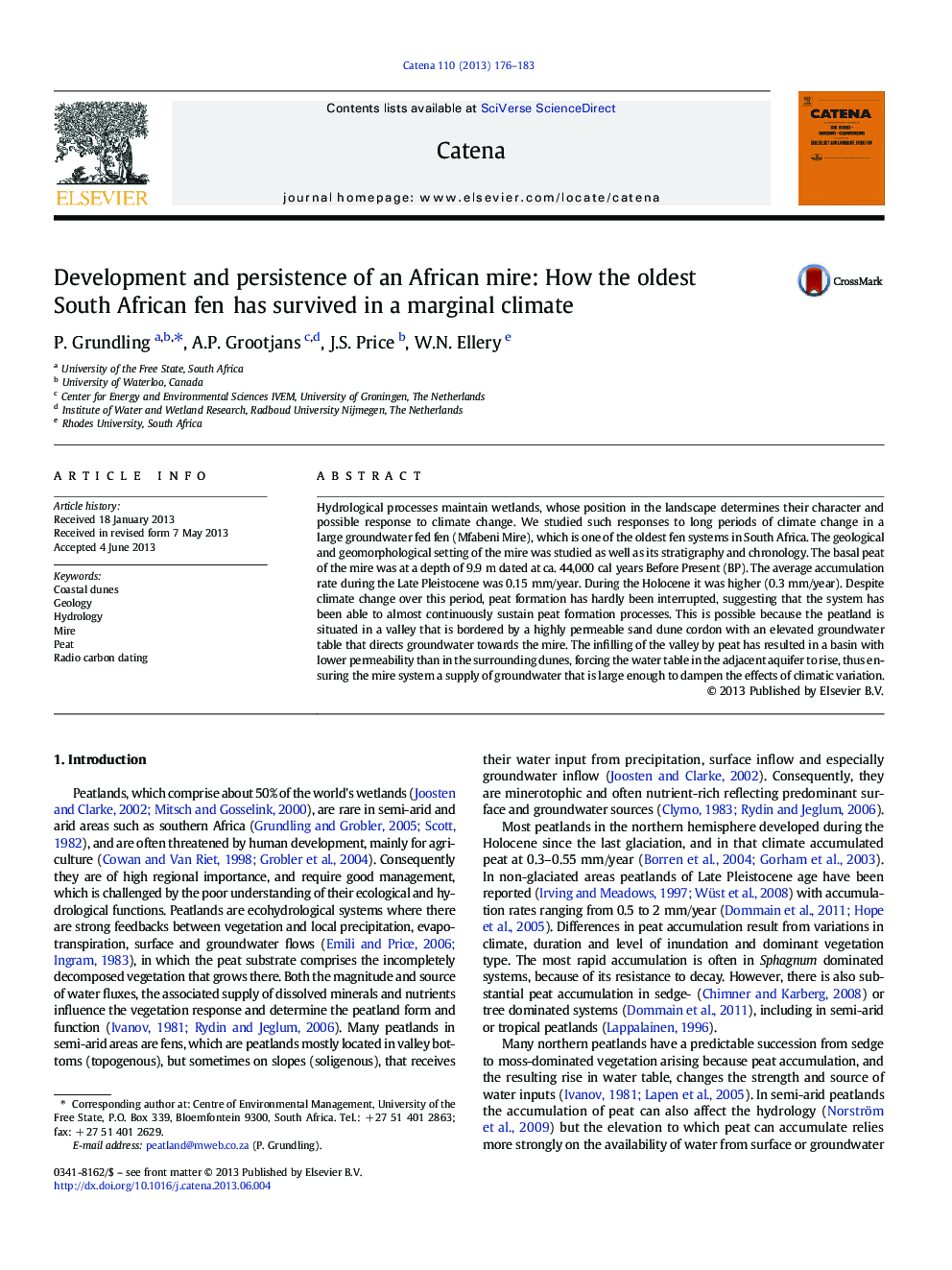| Article ID | Journal | Published Year | Pages | File Type |
|---|---|---|---|---|
| 6408174 | CATENA | 2013 | 8 Pages |
â¢The geomorphological setting of a mire in a marginal climate was studied.â¢Mire formation commenced ca 44,000 years Before Present.â¢Peat accumulated in the Late Pleistocene at 0.15 mm/year; half the Holocene rate.â¢Infilling of lowland with peat causes influent groundwater rise in adjacent upland.â¢Increased groundwater supply to the mire dampens the effects of climatic variation.
Hydrological processes maintain wetlands, whose position in the landscape determines their character and possible response to climate change. We studied such responses to long periods of climate change in a large groundwater fed fen (Mfabeni Mire), which is one of the oldest fen systems in South Africa. The geological and geomorphological setting of the mire was studied as well as its stratigraphy and chronology. The basal peat of the mire was at a depth of 9.9 m dated at ca. 44,000 cal years Before Present (BP). The average accumulation rate during the Late Pleistocene was 0.15 mm/year. During the Holocene it was higher (0.3 mm/year). Despite climate change over this period, peat formation has hardly been interrupted, suggesting that the system has been able to almost continuously sustain peat formation processes. This is possible because the peatland is situated in a valley that is bordered by a highly permeable sand dune cordon with an elevated groundwater table that directs groundwater towards the mire. The infilling of the valley by peat has resulted in a basin with lower permeability than in the surrounding dunes, forcing the water table in the adjacent aquifer to rise, thus ensuring the mire system a supply of groundwater that is large enough to dampen the effects of climatic variation.
